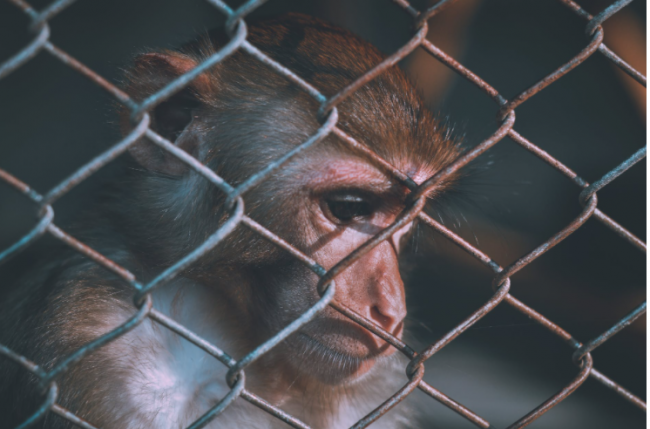NASA has reportedly killed all 27 monkeys that were living at the space agency’s research centre in California earlier last year.
We all are aware of the fact that Neil Armstrong was the first man in history to step on the surface of the moon in 1969. This success was a triumph, not just for the United States, but for the entire mankind. This exploration was considered to be a step closer to all human imaginations. We all till today, celebrate our success of reaching space, the outside world.
But what many people are not aware, is the truth that many sacrifices have been done in the past in order to get astronauts up into space. The major unsung heroes of space exploration turn out to be are: Animals. Many American and Russian scientists utilised animals, mainly monkeys, chimps, and dogs – in order to test their country’s ability to launch a living organism into space and bring it back alive and unharmed. In fact, the use of animals in space exploration is still prevalent.
After the service of these animal astronauts get over, they are termed to be retired and live their long lives in sanctuaries, but according to a recent report revealed by The Guardian, it is claimed that every monkey held by NASA was put to death on a single day last year. Though a majority of animal astronauts complete their life in sanctuaries, this wasn’t the fate of 27 primates held at NASA’s Ames Research Centre in California.
An entire batch of monkeys housed at a NASA facility was reportedly killed rather than being sent to a sanctuary. All 27 monkeys held by NASA were euthanised on February 2, 2019. The monkeys were given lethal doses of drugs to euthanize them. Records state that monkeys were aging and 21 had Parkinson’s disease. Also, it is claimed that none of the 27 monkeys had been to space and had never been used for studies in many years.
Outrage among Animal Welfare Groups:
The decision of the space agency to euthanise the animals rather than to move them to a sanctuary has been causing outrage among many animal rights advocates and welfare groups. The resolution to kill off the animals reasonably than transferring them to a sanctuary is being criticised by almost everybody.
According to John Gluck, an expert in animal ethics at the University of New Mexico, the monkeys were suffering the ethological deprivations and frustrations that are inherent due to living in a laboratory. He further added that the monkeys were “apparently not considered worthy of a chance to be moved to a sanctuary and start a new life. Not even a try?”
Gluck showing his disappointment even said that the space agency opted for “disposal” of the primates instead of showing simple decency. He later vocalised his anger by saying that those who are responsible should be ashamed.
Kathleen Rice, a US House representative, has also written to Jim Bridenstine, Nasa’s administrator, to demand an explanation for the deaths. Rice even mentioned that she has been pushing the US government to consider “humane retirement policies” for research animals. “I look forward to an explanation from administrator Bridenstine on why these animals were forced to waste away in captivity and be euthanized rather than live out their lives in a sanctuary,” Rice said in a statement.
Animals used in areas of science:
It is estimated that at least 100 million animals are used every year in the multibillion-dollar research industry that includes university, pharmaceutical and diagnostic laboratories, space agencies, and many others. Thousands of monkeys continue to be used for experiments, with a record 74,498 used in US research in 2017, a record year for monkey use.
Nasa has a long association with primates. Ham, a chimpanzee, received daily training before becoming the first great ape to be launched into space in 1961, successfully carrying out his brief mission before safely splashing down into the ocean. But these 27 monkeys euthanized last year were housed at the Ames facility in a joint care arrangement between Nasa and LifeSource BioMedical, a separate drug research entity, which had leased space at Ames from NASA.

